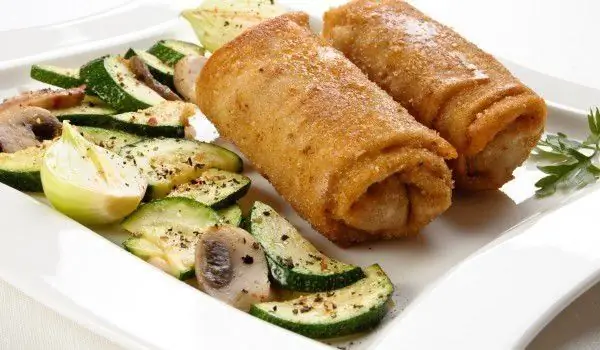2025 Author: Jasmine Walkman | [email protected]. Last modified: 2025-01-23 10:18
The restaurant is the eternal classic of nutrition, the triumph of the synthesis between the pleasure of food and the human need for communication. In the rush of the modern world, it is also a small stop - for a family dinner, a meeting with a friend or just an escape from homemade food.
Today, the restaurant looks like a good old relative of the bar, brunch and club. But once upon a time it was new and modern. And a few centuries ago it didn't even exist.
The word restaurant comes from the French verb "restaurer", which means to restore and which in the 12th century was used mainly with the meaning "fix", "repair".
From the beginning of the 16th century, the name began to acquire "nutritional meaning" and be used for "recovery with food". In the middle of the 17th century, the word already had a specific application and meant "restorative meat broth", and since the 18th century it has been used to describe the place where it is sold.
The first restaurant, as we know it today, was opened in Paris around 1765 by a coffee owner named Boulanger. He was the first to offer food at a separate table at any time of the day. Until now, inns and taverns served food at a specific time, and in Paris only food suppliers were allowed to offer it outside fixed hours. So they filed a lawsuit against Boulanger, but lost him, thus creating, unwittingly, a real mania for his establishment among aristocrats and intellectuals.
Other traders then picked up the idea and revived the old tradition of serving people with frail health a restorative meat and vegetable broth. In 1782, Antoine Boville, chef of the Prince de Conde and culinary adviser to the Count de Provence, opened in Paris, in a refined setting, the "Great London Tavern", the first truly large restaurant that would remain without a rival for more than 20 years.
The French Revolution accelerated the growth of the phenomenon - the collapse of the aristocracy left the cooks jobless and many provincials arrived in Paris, left without families to feed them. Since then, chefs trained in preparing quality cuisine have become restaurateurs and since 1789 there have been a number of restaurants in Paris, frequented by high society. 30 years later they are already 3000!

The first restaurant in the United States was opened in 1794 in Boston. It offers "French service", as it was known there then - the dishes are placed on the table and guests serve themselves. However, this method proved difficult to compile. Around 1810, the Russian prince Kurakin introduced "Russian service" in France, where the customer received the dish prepared on a plate.
Meanwhile, new neighborhoods are emerging in Paris and new restaurants are opening. The industrial revolution supported the process and the restaurant from the place of the city elite in the 19th century was democratized to meet new customers - workers, craftsmen and students. Food venues are adapting to the changes and giving rise to taverns and other establishments that serve cheap food.
In 1803, Grimon de la Rainier published his Gourmet Almanac, in which he commented Parisian restaurants - The first criticism was born. The press picked up the idea and began offering culinary chronicles. In 1850, "Les Petits-Paris" published the addresses of good restaurants. And designed for the first motorists, the red Michelin guide appeared in 1990 and quickly became a guide in gastronomy.
Recommended:
Narin - The First Bulgarian Acidophilic Yogurt

Recently, a new type has appeared in the sections for dairy products in stores yoghurt with the sonorous and beautiful name Narinѐ . Narinѐ is an Armenian female name given by Professor Levon Erzinkyan to the yoghurt with acidophilic bacteria produced by him and distributed in the then SSSP since 1964.
The Baby's First Puree - When, How And What?

Feeding the baby is a significant step forward in its cultivation, as with it the little man enters the eating habits of adults. It is very important that this first step is successful in paving the way for an easy transition to solid foods.
The First Plates Were Rectangular

The history of vessels dates back to ancient times. Ceramic art is one of the oldest on Earth. The basis for it is clay, which is available everywhere and historians believe that pottery was a craft in the early communal system. At the time, however, this craft was practiced by genes.
A Parisian Chef Discovered Sterilization And Canning

Food canning has been known and used since ancient times. Of course, not as we know it today - materials such as wax, wine, aromatic plants, salt were used. Later, alcohol, vinegar and essential oils were used for canning. The big step in food preservation was taken in 1795.
The Baguette Is Parisian If It Weighs 200 Grams

The baguette is considered Parisian if it weighs exactly 200 grams - at least that is the old recipe for French soft bread with a crispy crust. The baguette became popular in France in 1930. A law was then passed banning bakers from working before four in the morning.

